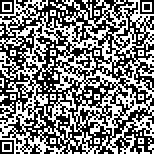| 本文已被:浏览 698次 下载 874次 |

码上扫一扫! |
|
|
| 浙江温州洞头国家海洋公园药用植物资源多样性调查 |
|
金鑫杰1,3,4,季郁琼1,吴华征2,邓文婕1,赖婵娟1,刘金亮1,3,4,胡仁勇1,张永华1,3,4
|
|
1.温州大学 生命与环境科学学院, 浙江 温州 325053;2.温州市自然资源和规划局洞头分局, 浙江 温州 325088;3.温州大学 浙江省水环境与海洋生物资源保护重点实验室, 浙江 温州 325053;4.温州大学 三垟湿地生态环境研究院,浙江 温州 325014
|
|
| 摘要: |
| 本研究采用样线调查法和踏查法相结合的方式对浙江温州洞头国家海洋公园药用植物资源进行调查研究。此次调查涉及14个岛屿共计23条样线,统计到药用植物共99科282属400种。结果表明:禾本科(Poaceae)和菊科(Asteraceae)为该区内的优势科;药用种子植物以热带成分为主;生活型以多年生草本植物为主,共计157种;药性以平性居多,有50科101属122种;入药部位以全草或全株入药为主,有64科160属221种;药效包含20个大类,其中以清热药为主,有55科97属115种;药用植物中有毒植物共计70种,隶属于31科54属;药用植物中有75种植物和77味中药被药典收载;共3种药用植物被列入世界自然保护联盟(IUCN)的受威胁评估等级,分别是全缘贯众(Cyrtomium falcatum)、黄檀(Dalbergia hupeana)和福参(Angelica morii),并有2种药用植物列入濒危动植物种国际贸易公约,分别是葱叶兰(Microtis unifolia)和绶草(Spiranthes sinensis)。在药用植物中发现1种国家二级重点保护野生植物:金荞麦(Fagopyrum dibotrys)和3种浙江省重点保护野生植物:龙须藤(Bauhinia championii)、三叶崖爬藤(Tetrastigma hemsleyanum)和柃木(Eurya japonica)。本研究旨在为该区域中药材产业的发展提供先导资料,并为海岛药用植物的开发和利用奠定基础。 |
| 关键词: 药用植物 资源调查 植物多样性 洞头国家海洋公园 |
| DOI:10.14188/j.ajsh.2023.05.005 |
| 分类号:Q949.95 |
| 基金项目:浙江省自然科学基金(LY21C030002);百山祖国家公园科学研究项目(2021KFLY06) |
|
| Investigation on the diversity of medicinal plant resources in Dongtou National Marine Park,Wenzhou,Zhejiang |
|
JIN Xinjie1,3,4, JI Yuqiong1, WU Huazheng2, DENG Wenjie1, LAI Chanjuan1, LIU Jinliang1,3,4, HU Renyong1, ZHANG Yonghua1,3,4
|
|
1.College of Life and Environmental Science, Wenzhou University, Wenzhou 325053, Zhejiang, China;2.Dongtou Branch of Wenzhou Natural Resources and Planning Bureau, Wenzhou 325088, Zhejiang, China;3.Key Laboratory of Water Environment and Marine Biological Resources Protection of Zhejiang, Wenzhou University, Wenzhou 325053, Zhejiang, China;4.Institute for Eco-environmental Research of Sanyang Wetland, Wenzhou University, Wenzhou, Zhejiang, 325014, China
|
| Abstract: |
| We adopted a combination of on-site visits and sample line surveys to investigate and analyze the medicinal plant resources on islands in Dongtou National Marine Park, Wenzhou, Zhejiang. A total of 23 line transects from 14 islands were involved in this field survey, providing results on 99 families, 282 genera, and 400 species of medicinal plants in the area. The survey results showed that Poaceae and Asteraceae are the dominant families in the region. The medicinal seed plants mainly contain tropical components. The main life forms are perennial herbaceous plants, with 157 species identified. Herbal properties of the majority of medicinal plants in the area are gentle, including 50 families, 101 genera, and 122 species. The main medicinal parts of these medicinal plants are whole herbs or entire plants, including 64 families, 160 genera, and 221 species. Medicinal efficacy falls into 20 categories, with heat-clearing drugs being the most common, including 55 families, 97 genera, and 115 species. Additionally, there are 70 species of poisonous plants in medicinal plants, which belong to 31 families and 54 genera. Finally, the pharmacopeia contains 75 types of plants and 77 types of traditional Chinese medicine in medicinal plants. There are three medicinal plants listed in the threatened levels of International Union for Conservation of Nature(IUCN), namely Cyrtomium falcatum, Dalbergia hupeana and Angelica morii. Microtis unifolia and Spiranthes sinensis are listed in the Convention on International Trade in Endangered Species of Wild Fauna and Flora. One species of national secondary key protected wild species (Fagopyrum dibotrys) and three species of Zhejiang provincial key protected wild species (Bauhinia championii,Tetrastigma hemsleyanum, Eurya japonica) are found in medicinal plants. The study aims to provide guidance for the development of the traditional Chinese medicine material industry, and to lay the foundation for the development and utilization of medicinal plants on the islands. |
| Key words: medicinal plant resource survey plant diversity Dongtou National Marine Park |

